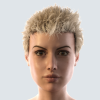Post work tutorial for Affinity Photo
 Sevrin
Posts: 6,310
Sevrin
Posts: 6,310
So there are a few tutorials for post work, mostly in Photoshop or maybe The Gimp, and there are tutorials for Affinity Photo. Since Affinity Photo (for Windows, Mac and iPad) is an increasingly popular, affordable (USD50ish) and very capable substitute for Ps, and more polished than The Gimp, along with being part of a suite, it's a nice way to get started in beginner to advanced image editing without selling your soul to Adobe. It can do almost all of the things Ps can, but does some of them differently, so a separate tutorial would be helpful.
I know some PAs use Affinity Photo and some do excellent tutorials *cough*@Sickleyield*cough*, so this isn't that much of a stretch. Of course one *could* figure this out oneself, but one could also make ones own models or design one's own 3D renderer or draw one's own photorealistic images with crayons, but having an advanced user demonstrate advanced techniques in this program would be very helpful.


Comments
Sickelyield DOES write some amazing tutorials. SY? Do you have Affinity Studios?
Yeah, and Sickleyield did a quick tutorial about canvasses waaaay back and has mentioned owning Affinity Photo. I learned a lot from that YouTube video and and others by Half Life and Deathbycanon.
You can't really discuss Iray render compositing and postwork without going into canvasses. I've been using them for all my scenes since learning about them and now can't think of not using them, but would love for someone to explain all of the canvas options in detail. The few options I've seen demonstrated are useful, but there are a bunch more, and it would take me days or weeks to give each one a spin with my hardware.
I think some people are intimidated by canvasses, or else don't see the need, but they provide so many more options, and certainly speed up the lighting of scenes, since you can mask and adjust levels in compositing. Having someone like Sickleyield go into detail would go a long way toward demystifying them.
Okay, pardon my ignorance. Let's start a discussion and people can chime in and learn too along with me.
What are canvases? :)
Sickleyield 'splains so good!
Nicce! Cool. I remember seeing this a while back but had forgotten about it.
Does it work with IRAY?
Checks video title... Yup!
So just for folks who have never tried using canvasses, here is a super basic example of their usefulness. Here 3 images made with a single render. There are 3 lights, the HDRI with light coming from the right, an overhead emissive surface, and a spot coming from the right. There are 3 canvasses, each of which only capturing the light from the 3 sources. Each canvas becomes a layer in whatever 3d image editing program you use that can handle EXR files and layers, for example Photoshop, The GIMP, or Affinity Photo, which is the program used here. You can also use the output EXR files, along with setting your camera as a "sphere" to make HDRIs out of your Daz scenery. In some cases this can be useful for drastically reducing the memory requirements of scenes.
HDRI primary light
Left Spot primary light
Overhead Emissive primary light